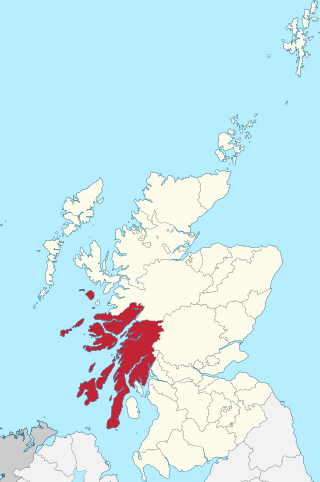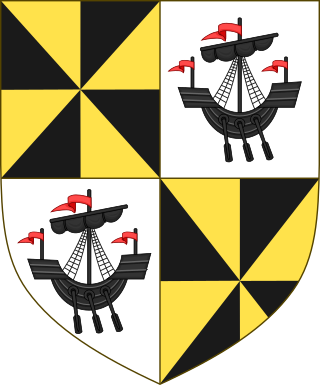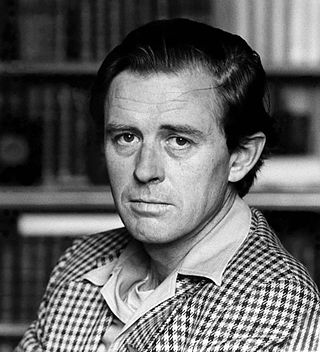Related Research Articles

Argyll and Bute is one of 32 unitary council areas in Scotland and a lieutenancy area. The current lord-lieutenant for Argyll and Bute is Jane Margaret MacLeod. The administrative centre for the council area is in Lochgilphead at Kilmory Castle, a 19th-century Gothic Revival building and estate. The current council leader is Councillor Jim Lynch.

Dunoon is the main town on the Cowal Peninsula in the south of Argyll and Bute, west of Scotland. It is located on the western shore of the upper Firth of Clyde, to the south of the Holy Loch and to the north of Innellan. As well as forming part of the council area of Argyll and Bute, Dunoon also has its own community council. Dunoon was a burgh until 1976.

Argyll, sometimes called Argyllshire, is a historic county and registration county of western Scotland.
The Isle of Bute, known as Bute, is an island in the Firth of Clyde in Scotland, United Kingdom. It is divided into highland and lowland areas by the Highland Boundary Fault.

Lord of the Isles or King of the Isles (Scottish Gaelic: Triath nan Eilean or Rìgh Innse Gall; Latin: Dominus Insularum) is a title of nobility in the Baronage of Scotland with historical roots that go back beyond the Kingdom of Scotland. It began with Somerled in the 12th century and thereafter the title was held by a series of his descendants, the Norse-Gaelic rulers of the Isle of Man and Argyll and the islands of Scotland in the Middle Ages. They wielded sea-power with fleets of galleys (birlinns). Although they were, at times, nominal vassals of the kings of Norway, Ireland, or Scotland, the island chiefs remained functionally independent for many centuries. Their territory included much of Argyll, the Isles of Arran, Bute, Islay, the Isle of Man, Hebrides, Knoydart, Ardnamurchan, and the Kintyre peninsula. At their height they were the greatest landowners and most powerful lords after the kings of England and Scotland.

Gillespie Archibald Campbell, 2nd Earl of Argyll was a Scottish nobleman and politician who was killed at the Battle of Flodden.
Archibald Campbell, 4th Earl of Argyll or Archibald "the Red" Campbell, was a Scottish nobleman and politician.

Duart Castle, or Caisteal Dhubhairt in Scottish Gaelic, is a castle on the Isle of Mull, beside the Sound of Mull off the west coast of Scotland, within the council area of Argyll and Bute. The castle dates back to the 13th century and is the seat of Clan MacLean. One source states that the castle was "brought back from ruin in 1911". The regimental colours of the WW1 Canadian Expeditionary Force 236th Battalion, CEF are laid up in the Great Hall.

Clan Maclean is a Highlands Scottish clan. They are one of the oldest clans in the Highlands and owned large tracts of land in Argyll as well as the Inner Hebrides. Many early MacLeans became famous for their honour, strength and courage in battle. They were involved in clan skirmishes with the Mackinnons, Camerons, MacDonalds and Campbells, as well as all of the Jacobite risings.
This is a list of people who have served as Lord Lieutenant of Buteshire. The post was established in 1794 and abolished in 1975, being replaced by the Lord Lieutenant of Argyll and Bute and the Lord Lieutenant of Ayrshire and Arran.
This is a list of people who served as Lord Lieutenant of Argyllshire. The office was created on 6 May 1794 and replaced by the Lord Lieutenant of Argyll and Bute in 1975.

Inch Kenneth is a small grassy island off the west coast of the Isle of Mull, in Scotland. It is at the entrance of Loch na Keal, to the south of Ulva. It is part of the Loch na Keal National Scenic Area, one of 40 in Scotland. It is within the parish of Kilfinichen and Kilvickeon, in Argyll and Bute.

Ian Campbell, 12th and 5th Duke of Argyll,, styled Marquess of Lorne between 1949 and 1973, was a Scottish peer and Chief of Clan Campbell. He was the 12th Duke of Argyll in the Peerage of Scotland, 5th Duke of Argyll in the Peerage of the United Kingdom and Lord Lieutenant of Argyll and Bute.

There have been two baronetcies created for persons with the surname Maclean, one in the Baronetage of Nova Scotia and one in the Baronetage of the United Kingdom. Both creations are extant as of 2010.

Jura is an island in the Inner Hebrides of Scotland, adjacent to and northeast of Islay. With an area of 36,692 hectares (142 sq mi), and 196 inhabitants recorded in the 2011 census, Jura is more sparsely populated than Islay, and is one of the least densely populated islands of Scotland: in a list of the islands of Scotland ranked by size, Jura comes eighth, whereas by population it comes 31st. The island is mountainous, bare and largely infertile, covered by extensive areas of blanket bog.

Sir Lachlan Hector Charles Maclean of Duart and Morven, 12th Baronet, CVO, DL is the 28th chief of Clan Maclean.
Cairnburgh Castle is a ruined castle that is located on the islands of Cairn na Burgh Mòr and Cairn na Burgh Beag, Argyll and Bute, Scotland. These islands are at the northern extremity of the Treshnish Isles at the mouth of Loch Tuath, Mull north of Iona. 1991's The Changing Scottish Landscape characterizes it as "one of the most isolated fortifications in Britain...[and] also one of the strangest."
The current chief of the Highland, Scottish clan, Clan Maclean is Sir Lachlan Hector Charles Maclean of Duart and Morvern Bt, CVO, Deputy Lord Lieutenant of Argyll and Bute, 28th clan chief and 12th Baronet of Morvern. The seat of the chiefs of Clan MacLean is Duart Castle on the Isle of Mull. Duart was given to Lachlan Lubanach Maclean as part of his wife's dowry.
Veronica, Lady Maclean was a Scottish food writer and hotelier. Her family owned Creggan's Inn on the shores of Loch Fyne in Argyll. Her first book pioneered recipes that she had collected from family and friends which she described as family or country house cooking, as opposed to the classical French haute cuisine, which was the universal style in hotels and restaurants in the 1960s.
References
- 1 2 "Lord-Lieutenant for Argyll and Bute: 14 July 2020". gov.uk. Retrieved 23 August 2020.
Sources
- Sainty, J. C. "Lieutenants and Lord-Lieutenants of Counties (Scotland) 1794-" . Retrieved 10 February 2018.